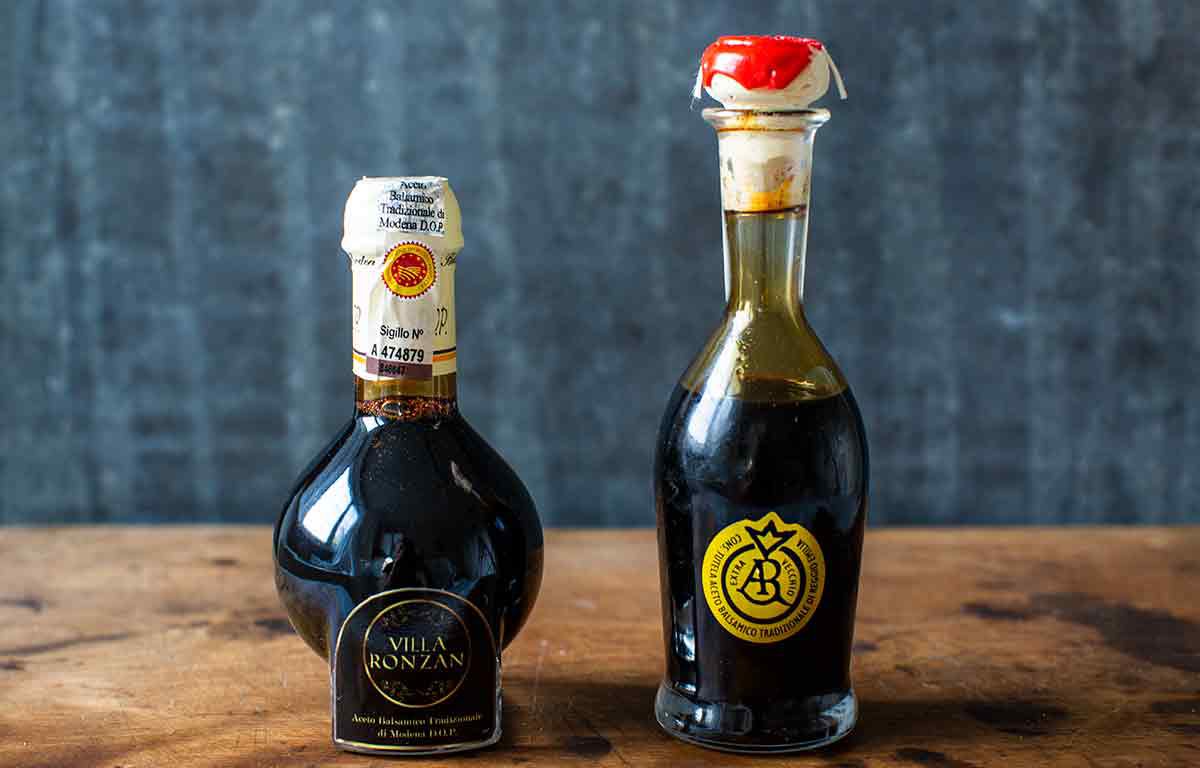Balm for the Tastebuds
Grapes have many uses. From eating them with delicate cheeses to their use as projectile weapons in food fights. They can be used to make fine wines. Or they can be distilled into brandy. In fact the best brandies in the world cost thousands of pounds. Their quality and scarcity are a result of a process taking many years to ferment, distil, age for perhaps decades in barrels before lovingly blending the tiny portion remaining from what you started with.
But who would take similar time and effort to produce a humble vinegar? Why, the Italians, of course! And where can you buy it? Limoncello, of course!
Traditional Balsamic Vinegar
The word “traditional” is thrown around a lot. Often meaning very little. “Traditionally made” vodka isn’t likely to taste any better than untraditionally made vodka. And “traditional” dances are more often than not made up for tourists to come watch.
But when we’re taking about “Traditional Balsamic Vinegar” (Aceto Balsamico Tradizionale) it makes a huge difference. Because this isn’t just a description but also a trademark of excellence under the European Protected Designation of Origin (PDO) system. And if you’ve never tasted real Balsamic vinegar, you have no idea what you’re missing. Comparing it to the cheap stuff you find in supermarkets is like comparing a Wagyu steak to a fast food joint burger.

Real Balsamic vinegar is slightly sweet, dark and richly flavoured. It has been produced in the area around the city of Moderna in Emilia-Romagna for perhaps a millennium. The word Balsam means “an aromatic and usually oily resinous substance” from plants used to make a balm. Which gives a good inclination to the texture of the finished product.
A Traditional Process
The grape growing region of Emilia-Romagna specialises in Trebbiano (white) and Lambrusco (red). Every year some of the Trebbiano grapes are set aside for the production of Balsamic vinegar. First the must is slowly cooked down to the consistency of a syrup, thereby concentrating the flavour, colour and aroma.
It is then cooled and moved over to wooden barrels in which the cooked must undergoes a slow fermentation process, producing alcohol. This alcohol is in turn fed upon by acetic bacteria, slowly converting wine into vinegar. This is then followed up by a lengthy barrel aging process of at least 12 years.
During this time some of the barrel’s contents will evaporate, and be progressively transferred to smaller barrels of different types of wood. This causes the gradually concentrating liquid to leach out flavours and colours from multiple different types of wood, such as chestnut, cherry, ash, mulberry and juniper. Ultimately, multiple different casks of different ages are blended in a system similar to the Solera system for Rum. The absolute minimum age for each cask before blending is 12 years, with the maximum being a lot higher.

This makes a comparison between Traditional Balsamic Vinegar and top shelf dark spirits quite reasonable. Both cost a lot and take many years to produce. But both also enjoy so many subtle layers of taste, texture and aroma that they are worth it. As such, Balsamic vinegar should be treated as you might treat a fine wine. Carefully, and with respect. We recommend drizzling some over aged cheeses or rich, gamy foods. Or perhaps used as a base for salad dressing, sauces or marinades.
However you choose to enjoy your Traditional Balsamic Vinegar, you’ll find it in Limoncello.
Credit: Thomas Farley


